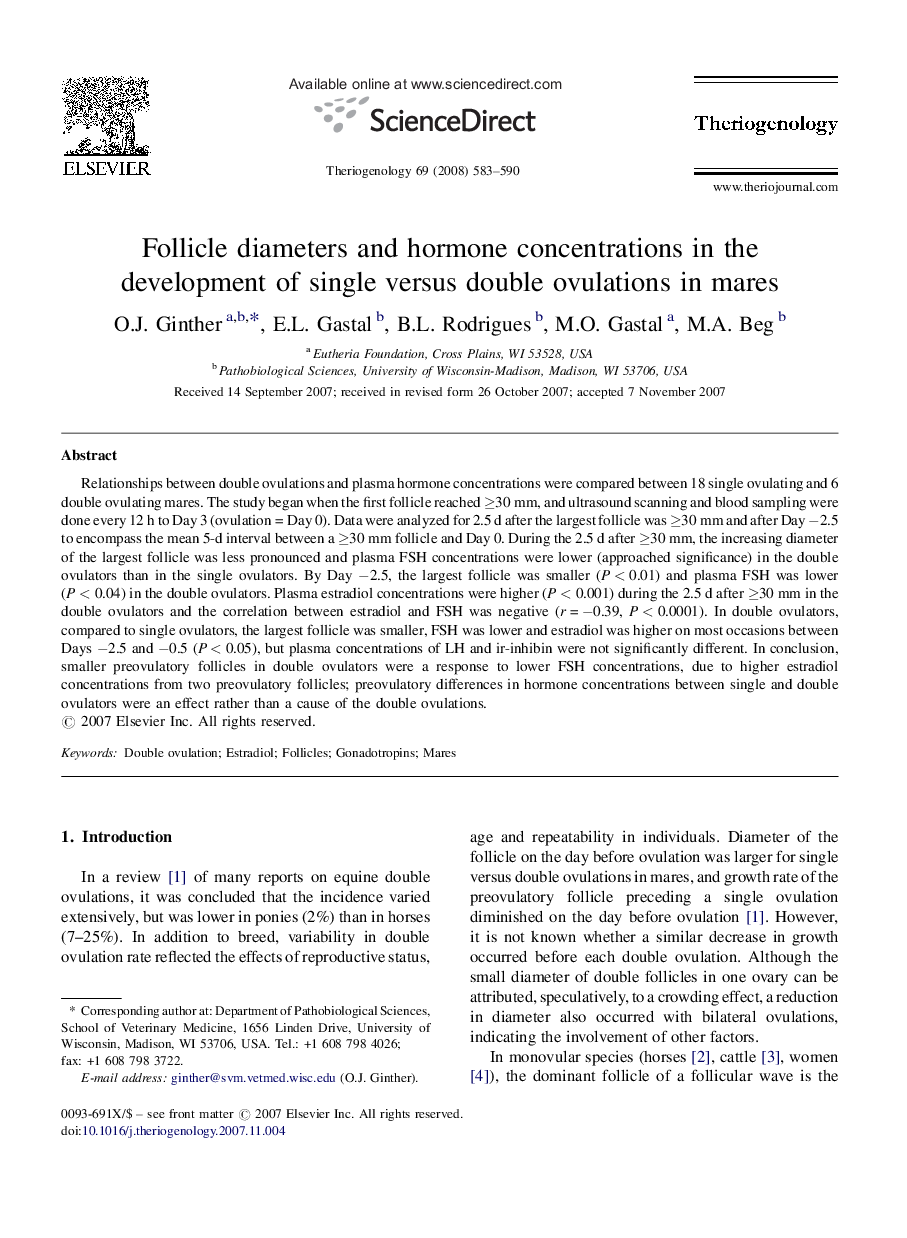| Article ID | Journal | Published Year | Pages | File Type |
|---|---|---|---|---|
| 2096379 | Theriogenology | 2008 | 8 Pages |
Relationships between double ovulations and plasma hormone concentrations were compared between 18 single ovulating and 6 double ovulating mares. The study began when the first follicle reached ≥30 mm, and ultrasound scanning and blood sampling were done every 12 h to Day 3 (ovulation = Day 0). Data were analyzed for 2.5 d after the largest follicle was ≥30 mm and after Day −2.5 to encompass the mean 5-d interval between a ≥30 mm follicle and Day 0. During the 2.5 d after ≥30 mm, the increasing diameter of the largest follicle was less pronounced and plasma FSH concentrations were lower (approached significance) in the double ovulators than in the single ovulators. By Day −2.5, the largest follicle was smaller (P < 0.01) and plasma FSH was lower (P < 0.04) in the double ovulators. Plasma estradiol concentrations were higher (P < 0.001) during the 2.5 d after ≥30 mm in the double ovulators and the correlation between estradiol and FSH was negative (r = −0.39, P < 0.0001). In double ovulators, compared to single ovulators, the largest follicle was smaller, FSH was lower and estradiol was higher on most occasions between Days −2.5 and −0.5 (P < 0.05), but plasma concentrations of LH and ir-inhibin were not significantly different. In conclusion, smaller preovulatory follicles in double ovulators were a response to lower FSH concentrations, due to higher estradiol concentrations from two preovulatory follicles; preovulatory differences in hormone concentrations between single and double ovulators were an effect rather than a cause of the double ovulations.
